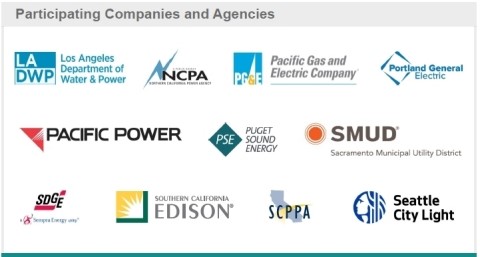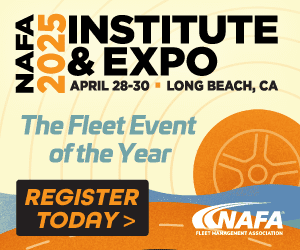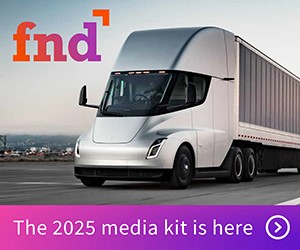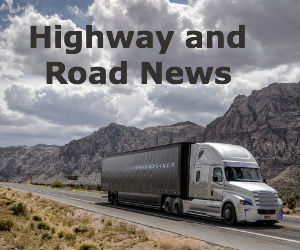West Coast Electric Truck Charging Sites Mapped Out by Electric Utilities

Clean Transit Corridor would create jobs, reduce greenhouse gas emissions from freight transportation, help eliminate diesel emissions
Electric utilities in three West Coast states have announced the results of a study that could lead to significant reductions of pollution from freight transportation up and down the Pacific Coast and create jobs in an economy hit hard by the novel coronavirus.
The West Coast Clean Transit Corridor Initiative, a study commissioned by an unprecedented collaboration among nine electric utilities and two agencies representing more than two dozen municipal utilities, recommends adding electric vehicle charging for freight haulers and delivery trucks at 50-mile intervals along Interstate 5 and adjoining highways.
“The results of this study provide a roadmap for electric utilities in Washington, Oregon and California to help electrify transportation in a coordinated fashion,” said Katie Sloan, director of eMobility and Building Electrification for Southern California Edison, one of the study’s sponsors. “This study comes at a time when we believe major investment in electric vehicle charging infrastructure will help significantly with economic recovery from COVID-19 in our states.”
Other sponsors of the study are Los Angeles Department of Water & Power, Northern California Power Agency, Pacific Gas and Electric Company, Pacific Power, Portland General Electric, Puget Sound Energy, Sacramento Municipal Utility District, San Diego Gas & Electric, Seattle City Light and Southern California Public Power Authority. HDR completed the study.
The study’s final report, published today, proposes a phased approach for electrifying the I-5 corridor. The first phase would involve installing 27 charging sites along I-5 at 50-mile intervals for medium-duty electric vehicles, such as delivery vans, by 2025. Then, later, 14 of the 27 charging sites would be expanded to also accommodate charging for electric big rigs by 2030, when it is estimated that 8% of all trucks on the road in California could be electric.
Of the 27 proposed sites, 16 are in California, five are in Oregon and six are in Washington. An additional 41 sites on other highways that connect to I-5 are being proposed for electrification. Those highways include Interstates 8, 10, 80, 210 and 710 and state routes 60 and 99 in California; I-84 in Oregon and I-90 in Washington.
“We are proud to work closely with our customers to help drive the electrification of commercial freight and fleet vehicles,” said Will Einstein, PSE’s director of New Product Development. “By supplying our customers with clean electricity as a transportation fuel, we can support our customers’ desire for lower-carbon electricity and transportation fuel options, reduce air emissions and improve community health outcomes while helping Washington state accelerate its efforts to meet stronger environmental goals.”
The report recommends expanding state, federal or private programs that provide funding for electrification, which could further accelerate electric truck adoption and expand economic opportunities associated with building sites. Several utilities in California — LADWP, PG&E, SDG&E and SCE — have programs aimed at supporting the adoption of electric trucks, but more support will be needed to reach electrification levels identified in the study and to meet state climate goals.
Other key findings in the report are:
- Most utilities in California, Oregon and Washington have enough capacity in urban areas along I-5 to support interconnections with the medium-duty charging sites. Rural areas are more of a challenge and none of the rural areas currently have capacity to serve heavy-duty site development.
- Stakeholders, including utilities, must begin proactive engagement to accommodate long lead times (multiple years in most cases) for system planning and site development.
- Clean fuel policies in West Coast states continue to drive transportation electrification in the near term and additional state, federal and private programs that provide funding for electrification could further accelerate electric truck adoption.
- Utilities should serve as trusted infrastructure providers that can be leveraged to collaborate across a broad range of industry stakeholders, educate customers, help standardize systems of charging equipment for trucks and ensure safe deployment of charging sites.
- Fleet operators surveyed as part of the study identified that access to public charging would accelerate deployment of electric vehicles because their trucks could use public sites to support their operations.
“Electrifying delivery, freight and other commercial transportation on I-5 and adjoining highways will help bring us closer to achieving clean energy and environmental goals, and will mean major health benefits to the communities near those highways,” said Eva DeCesaro, senior product manager, Transportation Electrification for Pacific Power. “This is especially true for underserved communities that are disproportionality impacted by carbon pollution.”
Data shows that people who live near truck-traffic corridors experience higher rates of asthma, lung and heart disease and chronic bronchitis due largely to breathing toxic vehicle emissions, specifically diesel particulate matter. A recent study also indicates that increases in particulate pollution is associated with higher death rates among COVID-19 patients.
In California, the transportation sector accounts for nearly 80% of the state’s air pollution and more than 40% of all greenhouse gas emissions. Washington and Oregon face similar environmental challenges, transportation being the largest contributor to air pollution and greenhouse gas emissions in those states as well.
“Electrifying transportation is a key component to reaching our goal of net-zero carbon emissions by 2040,” said Bill Boyce, SMUD’s manager of Electric Transportation. “As a transportation hub, reducing diesel emissions in long-haul transportation will further our goals of clean air and sustainable communities in our region and along the entire West Coast. We are pleased to be taking a comprehensive, interstate approach to clean transportation.”
Category: Driver Stuff, Electric Vehicles, Equipment, Featured, Fuel & Oil, General Update, Green, News, Vehicles










